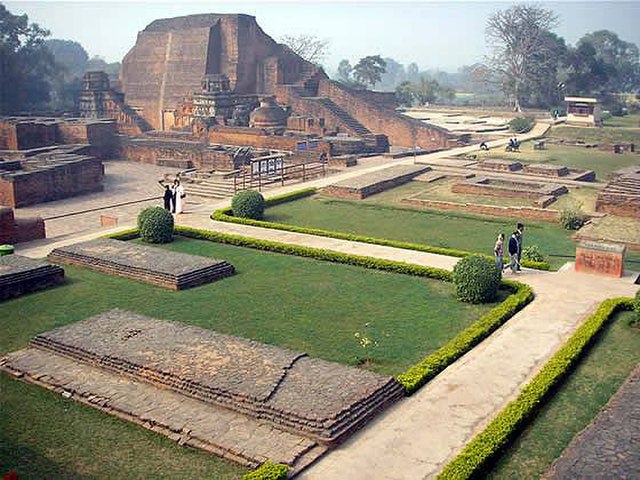In Buddhist philosophy, Buddha-nature is the potential for all sentient beings to become a Buddha or the fact that all beings already have a pure buddha-essence within. "Buddha-nature" is the common English translation for several related Mahayana Buddhist terms, most notably tathāgatagarbha and buddhadhātu, but also sugatagarbha, and buddhagarbha. Tathāgatagarbha can mean "the womb" or "embryo" (garbha) of the "thus-gone one" (tathāgata), and can also mean "containing a tathāgata". Buddhadhātu can mean "buddha-element," "buddha-realm" or "buddha-substrate".
The moon hidden by the clouds is a metaphor for Buddha-nature which is always shining but can be hidden or covered over by the afflictions.
The Tathāgatagarbha Sūtra states that the tathāgatagarbha is like the grain of rice contained inside of the husk of the rice plant
The Tathāgatagarbha Sūtra uses the image of a Buddha within a lotus flower as a metaphor for the tathāgatagarbha
A ritual vajra, a symbol of indestructibility, which is used in the Ratnagotravibhāga as an image of the adamantine-like permanence of buddha nature.
Buddhist philosophy is the ancient Indian philosophical system that developed within the religio-philosophical tradition of Buddhism. It comprises all the philosophical investigations and systems of rational inquiry that developed among various schools of Buddhism in ancient India following the parinirvāṇa of Gautama Buddha, as well as the further developments which followed the spread of Buddhism throughout Asia.
The Buddhist Nalanda mahavihara was a major institution of higher-learning in ancient India from the 5th century CE until the 12th century.
Gautama Buddha surrounded by his followers. Illustration from an 18th-century Burmese watercolour, Bodleian Library.
Indian Emperor Aśoka and the elder Moggaliputta-Tissa, who is seen as a key thinker of the Vibhajyavāda tradition (and thus, of Theravada).
Buddhaghosa (c. 5th century), the most important Abhidharma scholar of Theravāda Buddhism, presenting three copies of the Visuddhimagga.








